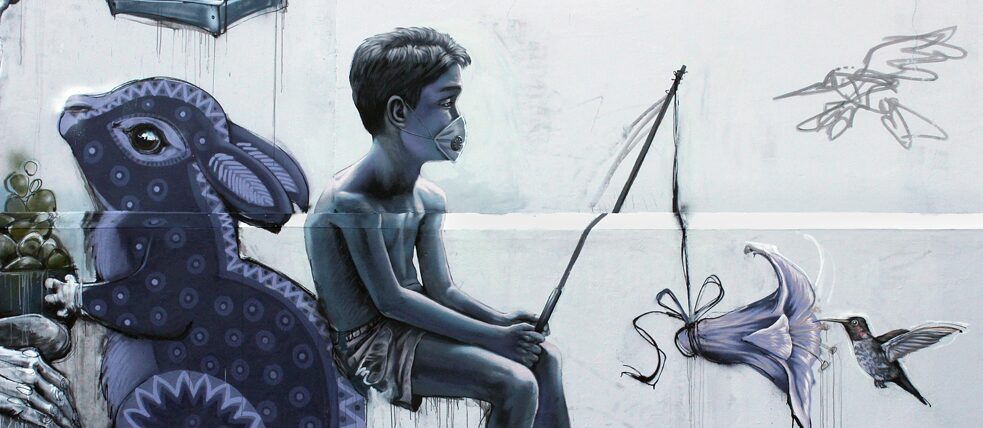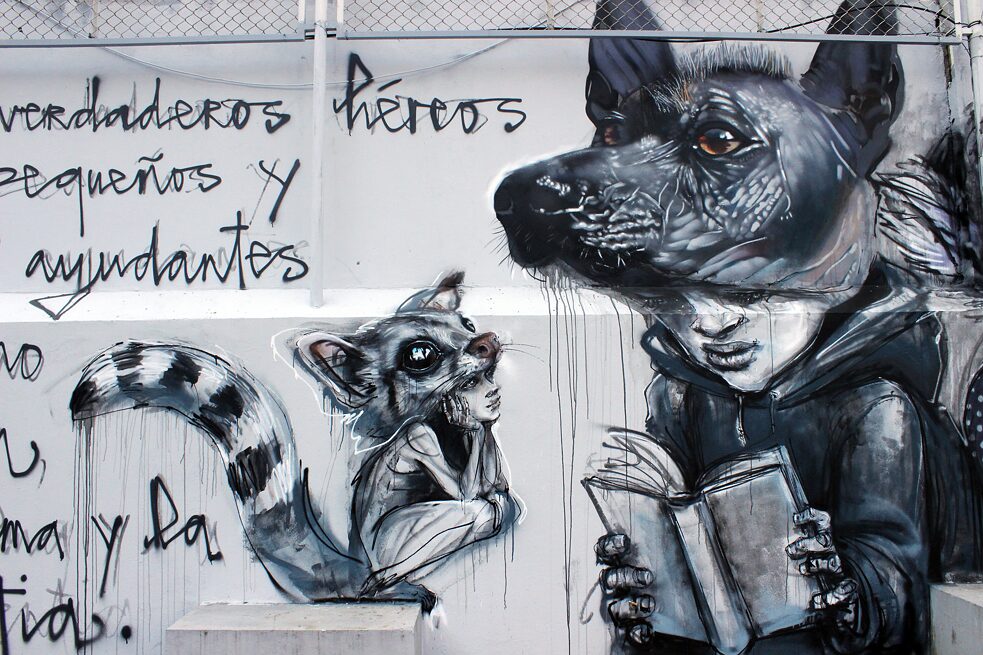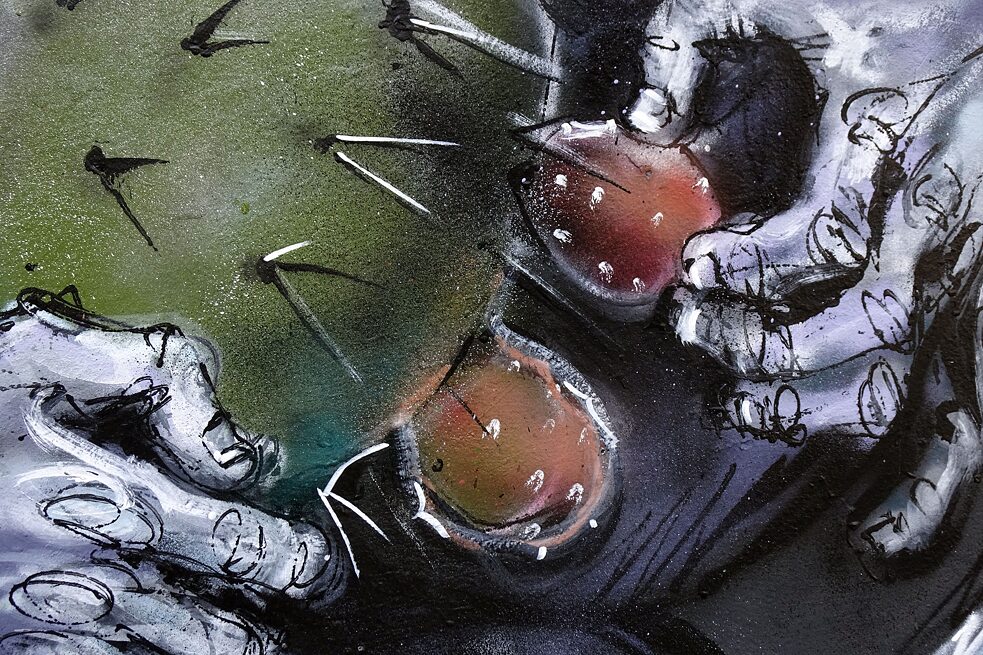Interview with the street artist Jasmin Siddiqui
“Giving each other room to breathe”

Wielding patience and solidarity as forces against the coronavirus pandemic: Together with the Mexican artists HeraGraff, Tomer Linaje, and Óscar Axo, the graffiti artist Jasmin Siddiqui AKA Hera created the mural “Silent Heroes” at the Goethe-Institut Mexico. She spoke with “The Latest” at Goethe about the work’s production and the role of art in times of crisis.
You had to extend your stay in Mexico because of the coronavirus. What brought you to Mexico and how did the idea arise to make the “Silent Heroes” mural there?
Sybille Ellermann from the Goethe-Institut Mexico and I first began talking about a possible tour in June 2019. In addition to preparing an exhibition with photographs of international street art, we also planned a collaborative mural for the Goethe-Institut Mexico, which I wanted to work on with the extremely talented Mexican painter Paola Delfin. That would have been an absolute pleasure, because we had met briefly at festivals in the United States on many occasions, exhibited works at the same art fairs or in galleries, but never had the opportunity to actually join forces.
Instead, you painted the mural with the Mexican street artists HeraGraff, Tomer Linaje, and Óscar Axo. Where did you meet one another?
I’ve visited Mexico City twice and painted murals on both occasions. My first stay was in 2008 when I was painting at a major graffiti festival and also designing an entire room in the Casa del Lago Juan José Arreola. On my second journey in 2012, my colleague Akut and I painted a mural in the Centro Histórico as a duo called Herakut.
The subcultural media hype that accompanied these visits played a major role in my networking with local artists Oscar Axo, HeraGraff, and Tomer Linaje. It was like meeting siblings. Each of them had seen me or my work before and was as hospitable as their mothers would have liked them to be.
 Mural for the “Silent Heroes” who remain calm in a crisis. | Photo: hera_herakut, Tomer Linaje
Mural for the “Silent Heroes” who remain calm in a crisis. | Photo: hera_herakut, Tomer Linaje
What is the role of artists in such times of crisis?
Art isn’t just a mirror that reflects the status quo; it reflects reality from a certain angle or alters it using a small, added filter. In the case of our mural at the Goethe-Institut, we show the ideal situation for people in these pandemic times. In our version, nobody is alone, even though everything and everyone is completely silent. The small child at the centre is preparing a meal of prickly pear for an elderly person; his efforts are supported by a larger spirit being that lends its strength for this humane cause. I chose a supernatural being that resembles the Aztec deity Quetzalcoatl, the feathered serpent. He is not the killing God, but the opposite, a silent helper.
 Detail of the prickly pear. | Photo: hera_herakut
Detail of the prickly pear. | Photo: hera_herakut
The entire mural uses imagery from Mexican culture and folklore, but we also illustrate the biggest problems of our time, which are keeping society together while remaining far enough apart to be safe.
Why do we need “Silent Heroes” in these times?
When it comes to diseases, we tend to use a vocabulary that portrays us as fist-swinging warriors, like “we’re beating cancer” or “we’re fighting HIV.” But none of our lofty emotions, dramatic gestures, and zealous activism are of any use to us to counter this virus. Instead of muscle, we have to show another type of strength, namely patience. And develop strategies to actually give each other space to breathe.
More information
Jasmin Siddiqui is a German-born artist, better known as Hera. She uses a variety of media in her contemporary urban and graffiti art to create emotional artworks. Hera worked with URBAN NATION for the M/13 project in 2018.
Jasmin Siddiqui is of German-Pakistani origin and was raised Catholic and Muslim. Because of her background, she experienced conflicts before even starting school. She didn’t know how to cope with them until she discovered graffiti. Hera is a graphic designer and attempts to combine traditional techniques and spray-painting to represent mythological creatures and comic and satirical scenes. These images often capture contemporary issues of injustice and social awareness.